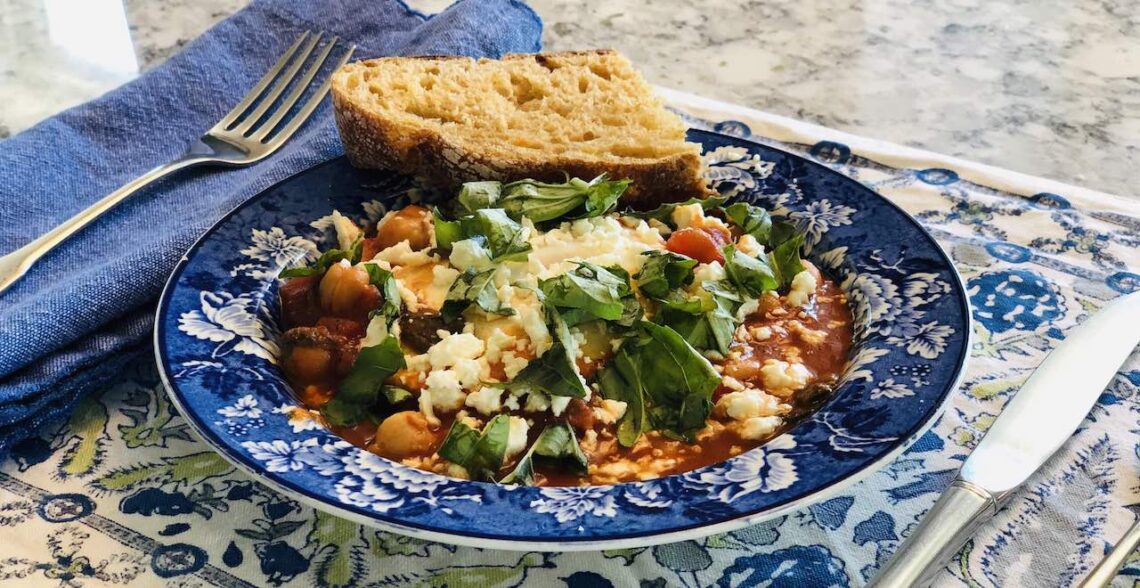
Chickpea and Spinach Shakshuka
Last summer I was studying for the bar and decided to stay in my law school apartment – with no air conditioning. It was fine for the first four weeks, but in the few days before I moved out the real New England summer hit. It was in the mid-90s and humid, and my apartment seemed to suck in all the heat from the street. I dripped with sweat just sitting in my kitchen, as I re-learned contract law and tried to understand what a secured transaction was. One night, desperate for decent food but too lazy to go buy any, I looked around my kitchen and found a jar of tomato sauce, a can of chickpeas, and frozen spinach. I went to my computer, googled “tomato sauce chickpeas spinach” and this recipe popped up. In that moment, I was hoping for a mediocre dinner and instead I got this.
This is a simple recipe. It’s made using a jar of tomato sauce (for my European friends, I’d suggest cooking down about two cans of tomatoes into a sauce with onions and basil), chickpeas, and spinach – the perfect pandemic dinner. But despite its simplicity, the milk provides a creaminess that makes the tomato sauce richer. And let’s be honest, yolky eggs in just about anything are delicious.
The core of the dish is the tomato sauce. So, let’s talk about tomatoes. The labor situation for tomatoes is actually pretty mixed. Back in the 1990s, the Florida tomato fields, where many U.S. tomatoes are grown, had some of the worst labor conditions in the country. Referred to as the “ground zero” of human slavery in the United States, forced labor and sexual harassment and assault were commonplace for years. Over a period of 15 years, federal prosecutions freed 1,200 farmworkers in Florida from what were essentially slavery rings.
The Coalition of Immokalee Workers (CIW), based in Immokalee, Florida, drastically changed the situation using boycotts, organizing, and effective monitoring systems. Through the Fair Food Program (FFP), the Florida tomato fields went from “being the worst to the best.” This was accomplished by implementing the “penny per pound,” a program through which companies agreed to pay tomato sellers a higher price per pound of tomato – if the tomato seller paid workers higher wages, complied with certain standards that include a human rights-based Code of Conduct, allowed legitimate monitoring and audits of the fields, had real worker education that taught workers their rights, and established a functional mechanism for workers to voice their grievances.
Since the FFP started, Whole Foods, Trader Joes, Walmart, and Stop & Shop have all signed on to the program. McDonalds, Burger King, Taco Bell, Subway, and Chipotle have as well – the last major fast food holdout is Wendy’s. (There is currently a vibrant campaign and boycott to get Wendy’s to join the FFP. But also, does anyone still go to Wendy’s?)
Unfortunately, only 20 to 25% of tomatoes sold in the U.S. are bought through the Fair Food Program. And the situation outside the U.S. can be quite different. Tomato pickers in Mexico, where 50% of U.S. tomatoes come from, has terrible labor conditions; workers often have their wages withheld, live in squalid conditions, and can be threatened if they try to leave the farms where they work – all indicators of forced labor. The situation in Italian tomato fields is equally bad and has been described as a “modern form of slavery.”
Because of CIW and the FFP, there are ethically sourced tomatoes out there and they are easier to find than, say, ethically-sourced bananas. So, look for tomatoes with the Fair Food label on them. This is truly one of the most effective programs that exists and the extra money companies pay for the tomatoes actually goes to the workers, both in higher wages and in improving the working conditions.
Edit re Covid-19: While the FFP is effective, tomato pickers still earn low wages and often live in poverty. Since early May, the town of Immokalee has seen a spike in Covid cases. Because there is little local healthcare, Doctors Without Borders recently set up testing facilities in the area. But there are real challenges in getting Covid under control, including language barriers, the tight quarters migrant workers often live in, and the fact that many workers cannot forego income for two weeks to quarantine.
Shakshuka
Course: Dinner, Recipe6
servings20
minutesAdapted, only a little, from Eggs in Tomato Sauce with Chickpeas & Spinach from Eating Well.
Ingredients
3 tablespoons extra-virgin olive oil
4 cloves garlic, minced
4 cups baby spinach, chopped (about 5 ounces)
1 (25-ounce) jar of tomato sauce
1 (15-ounce) can chickpeas, rinsed
1⁄4 cup milk
1⁄2 teaspoon salt
6 large eggs
2 tablespoons basil, chopped
Feta cheese, to garnish
Directions
- Rinse the chickpeas well and set aside.

- Heat the oil in large skillet over medium heat. Add the garlic and cook for 1-2 minute, until it begins to sizzle. Add the spinach and stir until it has wilted.
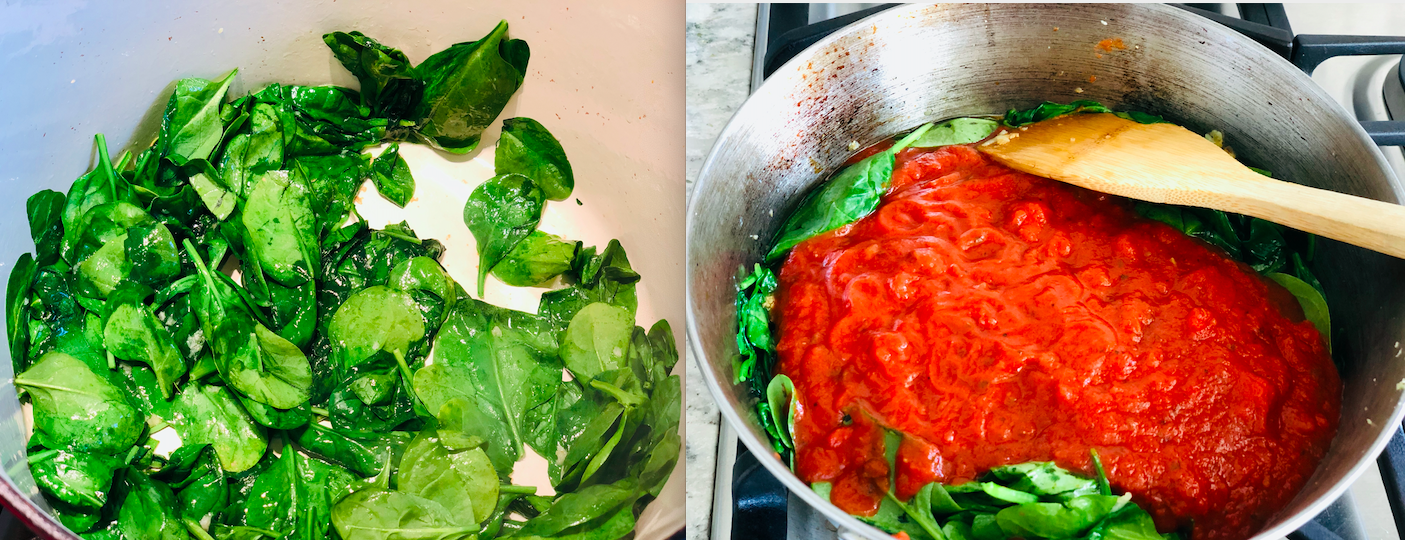
- Reduce the heat to low. Add the tomato sauce, rinsed chickpeas, milk, and salt. Simmer for 7-8 minutes (you may have to turn the heat up). Mix well to make sure that everything is evenly mixed.
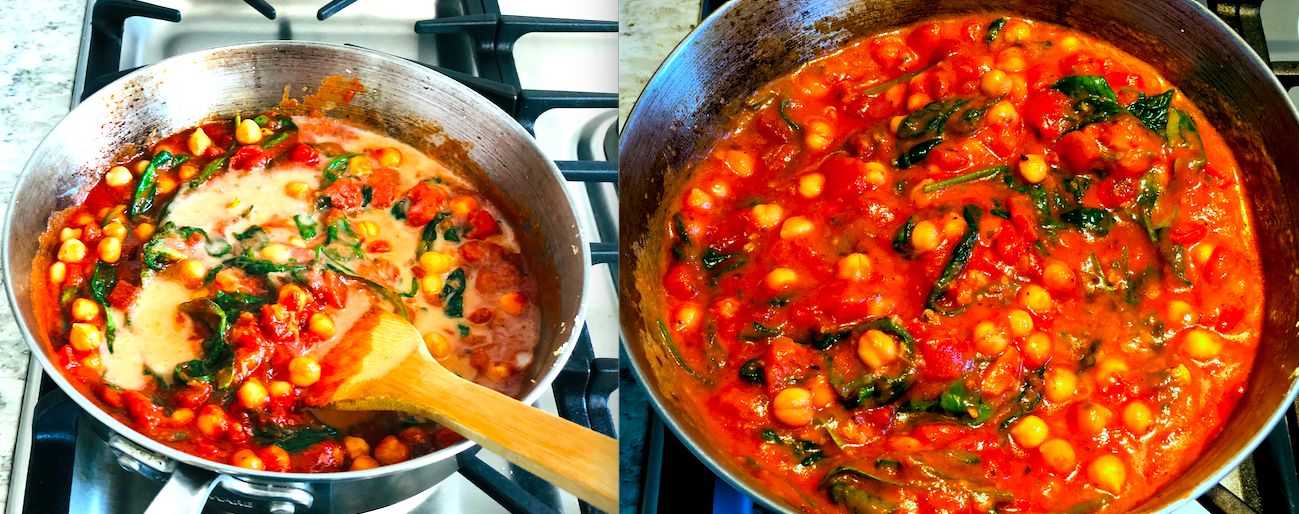
- When the tomato sauce is hot, crack your first egg into a small bowl. Keeping the sauce at a simmer, add the egg to the sauce. It can help to make a small well that can hold the egg. This keeps the egg from spreading across the sauce.
- Crack each egg into a bowl before adding to the sauce. Try to space them out in the pan. Depending on the size of your pan, you may only be able to make 4 at a time.
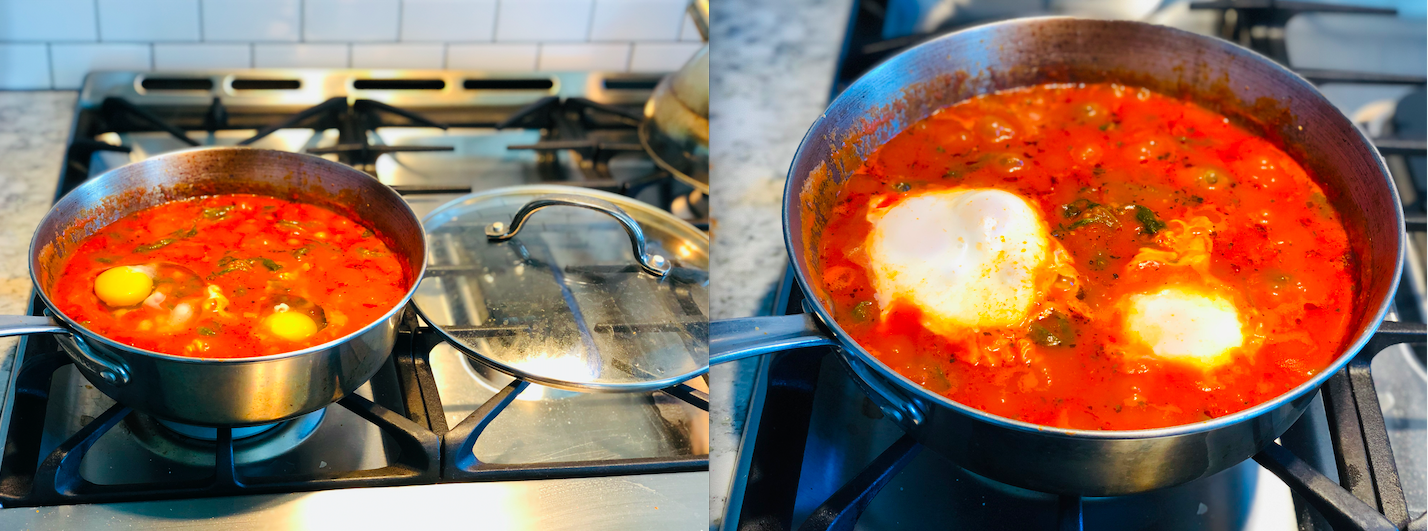
- Cover the eggs and cook until they have set but are still soft in the middle, 5-6 minutes over medium heat.
- When the eggs are cooked, spoon them and some sauce into a bowl. Garnish with feta cheese and chopped basil.
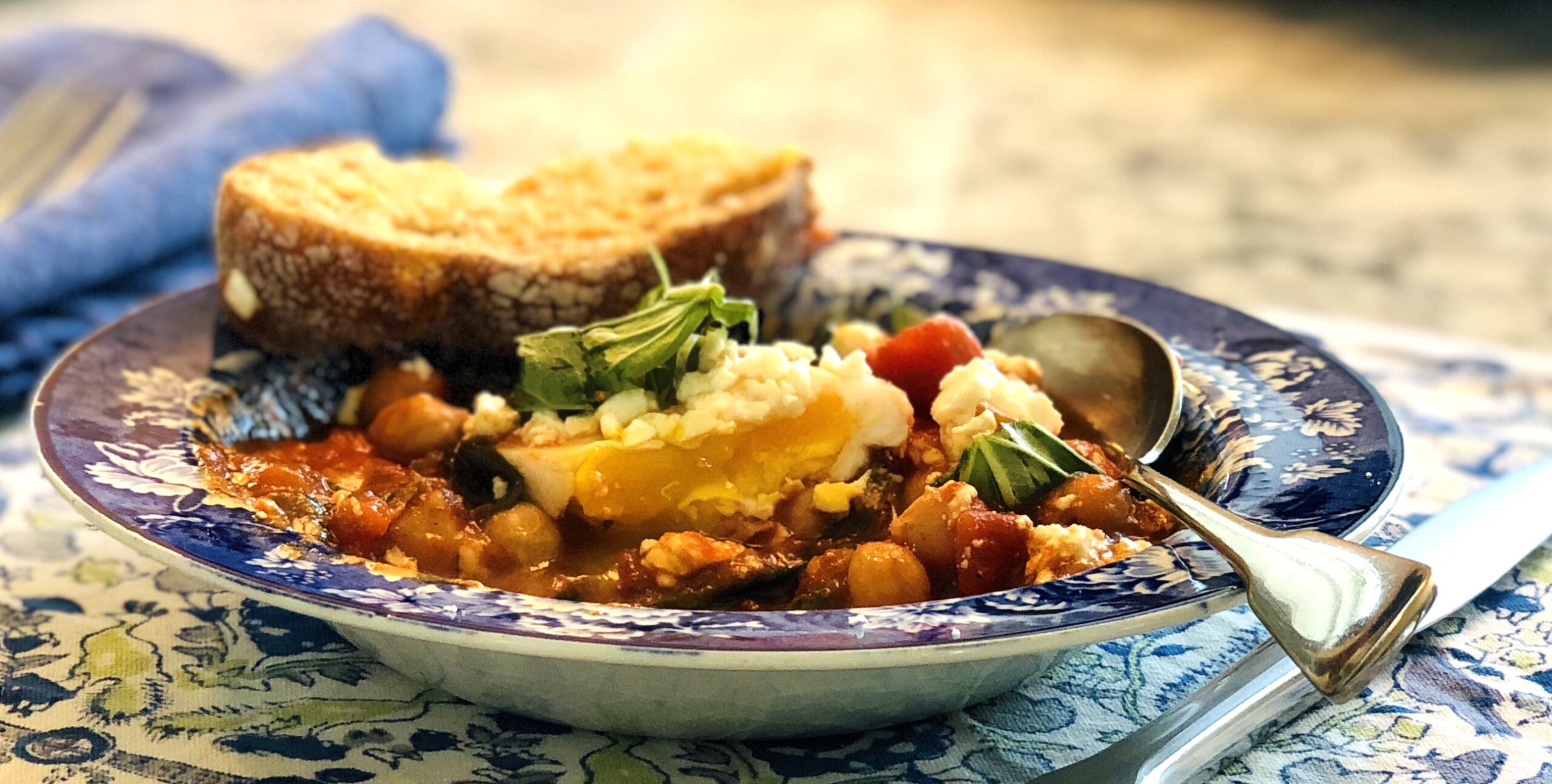
Notes
- I love fresh spinach, so use it when I can. But this recipe also works with frozen spinach. Either defrost the spinach before using or add it in after you’ve added the tomato sauce.






2 Comments
Avis Miller
I love this blog! Had no idea about specific human right issues with tomatoes
Bites & Rights
Thanks! So glad you like it!